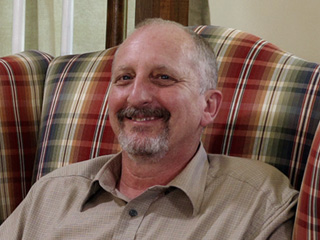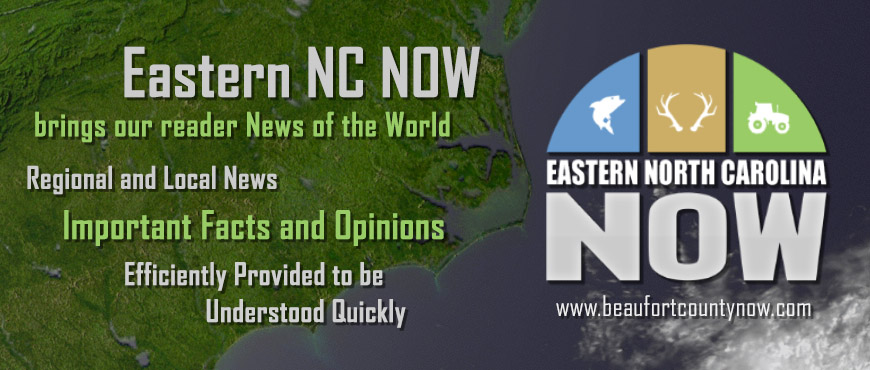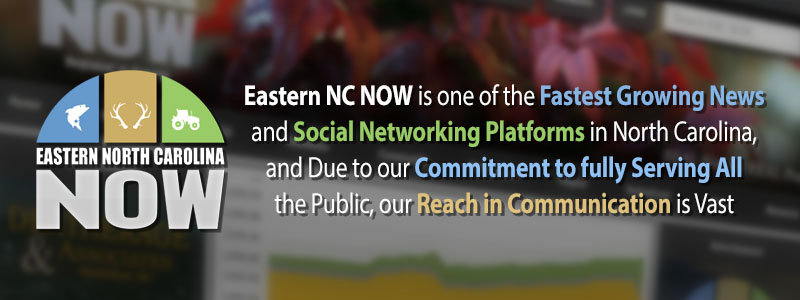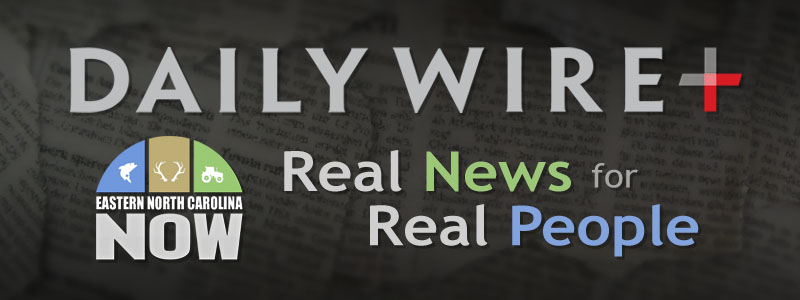The First Amendment Guarantees ALL Freedoms, including a Truthful Press
Advertising Makes A Difference
Publisher's note: This article appeared on John Hood's daily column in the Carolina Journal, which, because of Author / Publisher Hood, is linked to the John Locke Foundation.
 RALEIGH — I know my editors will appreciate it, but I promise I'm not pandering when I say this: advertising gets results.
RALEIGH — I know my editors will appreciate it, but I promise I'm not pandering when I say this: advertising gets results.
Although academic scolds and professional worrywarts have been complaining about advertising ever since it was invented, the truth is that when institutions spend money effectively to distribute their message, it serves not just their interests but also those of the public. The audience find out things they didn't previously know, including the existence of goods and services that come as a pleasant surprise to them.
As I discuss at great length in my 2005 book Selling the Dream: Why Advertising Is Good Business, it would be impossible for competitive markets to exist without commercial practices such as marketing, advertising, and public relations. But the benefits extend far beyond commerce.
It's not fashionable to say this, but advertising makes truly competitive politics possible. Challengers, in particular, would have a hard time overcoming the inherent advantages of incumbency — such as frequent media coverage, name recognition, and the use of governmental resources for what amounts to campaigning — if they and their allies were unable to raise and spend money freely to communicate with voters.
Of course, paid advertising can be used effectively by either side. Look at the last two months of the U.S. Senate race between incumbent Democrat Kay Hagan and Republican challenger Thom Tillis.
Around the beginning of September, the two candidates were essentially tied in the publicly available polls, each with about 43 percent of the vote. The remaining electorate either leaned towards the Libertarian candidate, Sean Haugh, or were undecided.
During the ensuing two weeks, Hagan and pro-Democratic groups began a barrage of attack ads against Tillis, most of them questioning the adequacy of state spending on education during his tenure as speaker of the state house. The ads worked. An average of the polls taken during the first half of September showed Hagan rising to 45 percent, Tillis falling to 39 percent, and the undecided camp actually growing as voters who already harbored doubts about Hagan now began to harbor doubts about Tillis, too.
During the second half of September, Tillis and pro-Republican groups began spending more money on TV ads, matching and sometimes exceeding Democratic buys. Unlike the Hagan barrage, only some of these spots were attack ads. Many were positive or response ads designed to improve Tillis's public image. They also worked. His average support went back up a couple of points. Hagan's slightly declined.
In early October, as the candidates approached the last turn in the race, both teams spent heavily on new rounds of attack ads. The Tillis side hit Hagan on her absence from key Senate hearings about the growing national-security threat from ISIS. The Hagan side hit Tillis with more spots on education as well as abortion rights and other issues. During the first two weeks of the month, Hagan's average support in the polls declined a little bit more while Tillis's support went up a little bit more. By mid-October, the race was at 44 percent Hagan, 42 percent Tillis, 5 percent Haugh, and 9 percent undecided.
For the final two weeks of October, the homestretch of the Senate race, Tillis appears to have the momentum while Hagan still enjoys a sizable cash advantage — which could translate into more advertising time to sway last-minute deciders and to mobilize the base. Whether independent groups will boost Tillis up to rough parity in ad spending remains to be seen. At this writing, there have been only three public polls released during the homestretch: a Public Policy Polling survey showing Hagan leading Tillis 46-43, a Survey USA poll also showing a 46-43 Hagan edge, and a Gravis Marketing survey showing Tillis ahead 48-43.
Most political observers think that, given how close the two candidates are in the end, the outcome will be determined on the ground, by get-out-the-vote operations, rather than over the airwaves. That may well be. But effective advertising — TV, radio, print, and online — reinforces the message conveyed by the campaign's ground game.
Advertising works. That's why companies, campaigns, and institutions still spend lots of money on it.
Go Back

John Hood, president of the John Locke Foundation.
Although academic scolds and professional worrywarts have been complaining about advertising ever since it was invented, the truth is that when institutions spend money effectively to distribute their message, it serves not just their interests but also those of the public. The audience find out things they didn't previously know, including the existence of goods and services that come as a pleasant surprise to them.
As I discuss at great length in my 2005 book Selling the Dream: Why Advertising Is Good Business, it would be impossible for competitive markets to exist without commercial practices such as marketing, advertising, and public relations. But the benefits extend far beyond commerce.
It's not fashionable to say this, but advertising makes truly competitive politics possible. Challengers, in particular, would have a hard time overcoming the inherent advantages of incumbency — such as frequent media coverage, name recognition, and the use of governmental resources for what amounts to campaigning — if they and their allies were unable to raise and spend money freely to communicate with voters.
Of course, paid advertising can be used effectively by either side. Look at the last two months of the U.S. Senate race between incumbent Democrat Kay Hagan and Republican challenger Thom Tillis.
Around the beginning of September, the two candidates were essentially tied in the publicly available polls, each with about 43 percent of the vote. The remaining electorate either leaned towards the Libertarian candidate, Sean Haugh, or were undecided.
During the ensuing two weeks, Hagan and pro-Democratic groups began a barrage of attack ads against Tillis, most of them questioning the adequacy of state spending on education during his tenure as speaker of the state house. The ads worked. An average of the polls taken during the first half of September showed Hagan rising to 45 percent, Tillis falling to 39 percent, and the undecided camp actually growing as voters who already harbored doubts about Hagan now began to harbor doubts about Tillis, too.
During the second half of September, Tillis and pro-Republican groups began spending more money on TV ads, matching and sometimes exceeding Democratic buys. Unlike the Hagan barrage, only some of these spots were attack ads. Many were positive or response ads designed to improve Tillis's public image. They also worked. His average support went back up a couple of points. Hagan's slightly declined.
In early October, as the candidates approached the last turn in the race, both teams spent heavily on new rounds of attack ads. The Tillis side hit Hagan on her absence from key Senate hearings about the growing national-security threat from ISIS. The Hagan side hit Tillis with more spots on education as well as abortion rights and other issues. During the first two weeks of the month, Hagan's average support in the polls declined a little bit more while Tillis's support went up a little bit more. By mid-October, the race was at 44 percent Hagan, 42 percent Tillis, 5 percent Haugh, and 9 percent undecided.
For the final two weeks of October, the homestretch of the Senate race, Tillis appears to have the momentum while Hagan still enjoys a sizable cash advantage — which could translate into more advertising time to sway last-minute deciders and to mobilize the base. Whether independent groups will boost Tillis up to rough parity in ad spending remains to be seen. At this writing, there have been only three public polls released during the homestretch: a Public Policy Polling survey showing Hagan leading Tillis 46-43, a Survey USA poll also showing a 46-43 Hagan edge, and a Gravis Marketing survey showing Tillis ahead 48-43.
Most political observers think that, given how close the two candidates are in the end, the outcome will be determined on the ground, by get-out-the-vote operations, rather than over the airwaves. That may well be. But effective advertising — TV, radio, print, and online — reinforces the message conveyed by the campaign's ground game.
Advertising works. That's why companies, campaigns, and institutions still spend lots of money on it.
| Are college course syllabi really protected by copyright? | Carolina Journal, Editorials, Op-Ed & Politics | The Campaign For A Much Larger Minimum Wage Should Be Sobered By McDonald's' Struggles |
Latest Op-Ed & Politics
|
Biden abuses power to turn statute on its head; womens groups to sue
Published: Friday, April 19th, 2024 @ 8:28 pm
By: John Steed
|
|
The Missouri Senate approved a constitutional amendment to ban non-U.S. citizens from voting and also ban ranked-choice voting.
Published: Friday, April 19th, 2024 @ 12:33 pm
By: Daily Wire
|
|
Democrats prosecuting political opponets just like foreign dictrators do
Published: Friday, April 19th, 2024 @ 10:58 am
By: John Steed
|
|
populist / nationalist / sovereigntist right are kingmakers for new government
Published: Friday, April 19th, 2024 @ 10:04 am
By: John Steed
|
|
18 year old boy who thinks he is girl planned to shoot up elementary school in Maryland
Published: Friday, April 19th, 2024 @ 8:46 am
By: John Steed
|
|
Biden assault on democracy continues to build as he ramps up dictatorship
Published: Friday, April 19th, 2024 @ 8:26 am
By: John Steed
|
|
illegal alien "asylum seeker" migrants are a crime wave on both sides of the Atlantic
Published: Thursday, April 18th, 2024 @ 8:10 am
By: John Steed
|
|
UNC board committee votes unanimously to end DEI in UNC system
Published: Thursday, April 18th, 2024 @ 7:54 am
By: John Steed
|
|
this is the propagandist mindset of MSM today
Published: Wednesday, April 17th, 2024 @ 3:04 pm
By: John Steed
|
|
Police in the nation’s capital are not stopping illegal aliens who are driving around without license plates, according to a new report.
Published: Wednesday, April 17th, 2024 @ 8:59 am
By: Daily Wire
|
|
same insanity that created Covid
Published: Wednesday, April 17th, 2024 @ 8:58 am
By: John Steed
|
|
Davidaon County student suspended for using correct legal term for those in country illegally
Published: Wednesday, April 17th, 2024 @ 7:23 am
By: John Steed
|
























